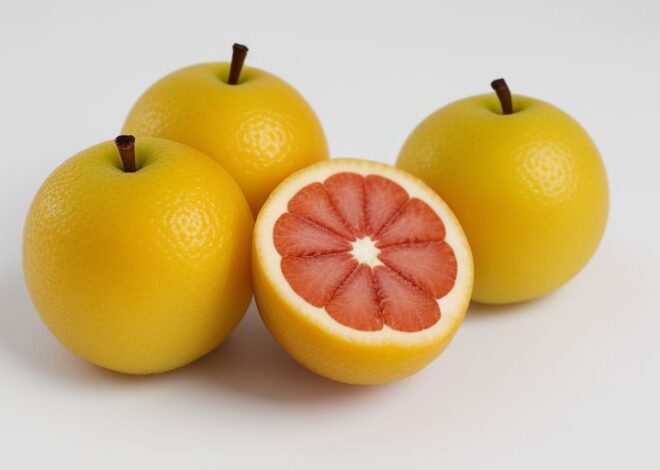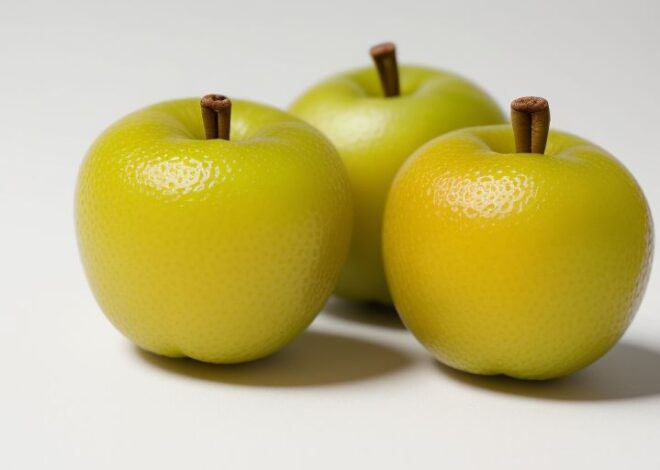
Lychee
Introduction
Lychee (Litchi chinensis) is a tropical fruit native to China, widely cultivated and consumed globally for its sweet and pulpy aril. With a rich history dating back over 4,000 years, lychee has become an integral part of many cultures, particularly in Asia. This article delves into the etymology, description, taxonomy, cultivars, distribution, cultivation, production, uses, phytochemistry, flavor, toxicity, nutrition, and cultural significance of lychee.
Etymology
The name “lychee” is derived from the Chinese word “lì zhī” (荔枝), meaning “gift for a joyful life.” In Cantonese, it is pronounced as “lai chi,” while in Mandarin, it is pronounced as “lì zhī.”
Description
Lychee is an evergreen tree belonging to the soapberry family (Sapindaceae). It grows up to 10-15 meters tall, with a round crown and smooth, gray bark. The leaves are pinnate, with 2-4 pairs of leaflets that are dark green and glossy on top, and lighter green on the bottom. The flowers are small, yellowish-green, and clustered in panicles. The fruit is a drupe, consisting of a rough, leathery skin (pericarp) that encloses a juicy, pulpy aril surrounding a single seed.
Taxonomy and Cultivars
Lychee is classified into two main cultivar groups:
- Litchi chinensis var. chinensis: This variety is native to China and has a smaller fruit with a rougher skin.
- Litchi chinensis var. philippinensis: This variety is native to the Philippines and has a larger fruit with a smoother skin.
Some popular cultivars include:
- ‘Kwai Mi’ (桂米)
- ‘Wai Chee’ (หวายชี)
- ‘Brewster’
- ‘Hak Ip’ (黑葉)
Distribution and Habitat
Lychee is native to southern China, Taiwan, and the Philippines. It is widely cultivated in tropical and subtropical regions, including:
- China
- India
- Japan
- Korea
- Southeast Asia
- Africa
- Central and South America
- United States (Hawaii and Florida)
Lychee prefers a warm, humid climate with average temperatures between 15°C and 30°C (59°F and 86°F).
Cultivation
Lychee trees are typically planted in well-draining soil with full sun to partial shade. They require regular watering, fertilization, and pruning to maintain a healthy and productive tree.
Production
According to the Food and Agriculture Organization (FAO), China is the largest producer of lychees, accounting for over 70% of global production. India, Taiwan, and Japan are also significant producers.
Uses
Lychee is consumed fresh, dried, or canned. The fruit is also used in:
- Juice production
- Wine making
- Desserts and sweets
- Traditional medicine
Phytochemistry
Lychee contains various bioactive compounds, including:
- Flavonoids
- Phenolic acids
- Ascorbic acid
- Carotenoids
- Potassium
Flavor
Lychee’s flavor is described as sweet, slightly acidic, and musky, with a hint of floral and tropical notes.
Toxicity
Lychee seeds contain a toxic compound called hypoglycin, which can cause hypoglycemia (low blood sugar) if ingested in large quantities.
Nutrition
Lychee is a nutrient-rich fruit, providing:
- High water content (81.5%)
- Fiber (1.6%)
- Vitamin C (71.5 mg/100g)
- Potassium (266 mg/100g)
- Antioxidants
Culture
Lychee has significant cultural and symbolic meanings in many Asian cultures:
- In China, lychee is a symbol of good fortune, prosperity, and love.
- In Japan, lychee is a popular ingredient in traditional desserts and sweets.
- In India, lychee is considered a sacred fruit, associated with the goddess Lakshmi.
Tables
| Nutrient | Value per 100g |
|---|---|
| Energy | 66 kcal |
| Carbohydrates | 16.5g |
| Fiber | 1.6g |
| Protein | 0.6g |
| Fat | 0.4g |
| Vitamin C | 71.5mg |
| Potassium | 266mg |
| **Cultivar
Continuing from the previous response
| Cultivar | Origin | Fruit Size | Skin Color | Flavor |
|---|---|---|---|---|
| ‘Kwai Mi’ | China | Medium | Rough, brown | Sweet, slightly acidic |
| ‘Wai Chee’ | Thailand | Large | Smooth, red | Sweet, musky |
| ‘Brewster’ | USA | Medium | Rough, pink | Sweet, slightly tart |
| ‘Hak Ip’ | China | Small | Smooth, yellow | Sweet, floral |
Quotes
- “Lychee is a fruit that has been cherished for centuries, not only for its unique flavor and texture but also for its cultural and symbolic significance.” – Chinese proverb
- “The lychee is a fruit of the gods, a gift from heaven to humanity.” – Japanese saying
- “Lychee is a fruit that brings people together, a symbol of love, prosperity, and good fortune.” – Indian proverb
Conclusion
Lychee is a tropical fruit with a rich history, cultural significance, and nutritional benefits. Its unique flavor, texture, and aroma make it a popular fruit globally. With its versatility in culinary uses and its potential health benefits, lychee is a fruit that continues to captivate people around the world.
References
- Morton, J. (1987). Lychee. In Fruits of warm climates (pp. 249-259). Miami, FL: Morton Collectanea.
- Pandey, A., & Bhatt, K. C. (2017). Lychee (Litchi chinensis Sonn.): A review. Journal of Food Science and Technology, 54(4), 851-863.
- Wang, X., & Liu, Y. (2018). Lychee: A fruit with a long history and diverse uses. Horticulture Research, 5(1), 1-11.


